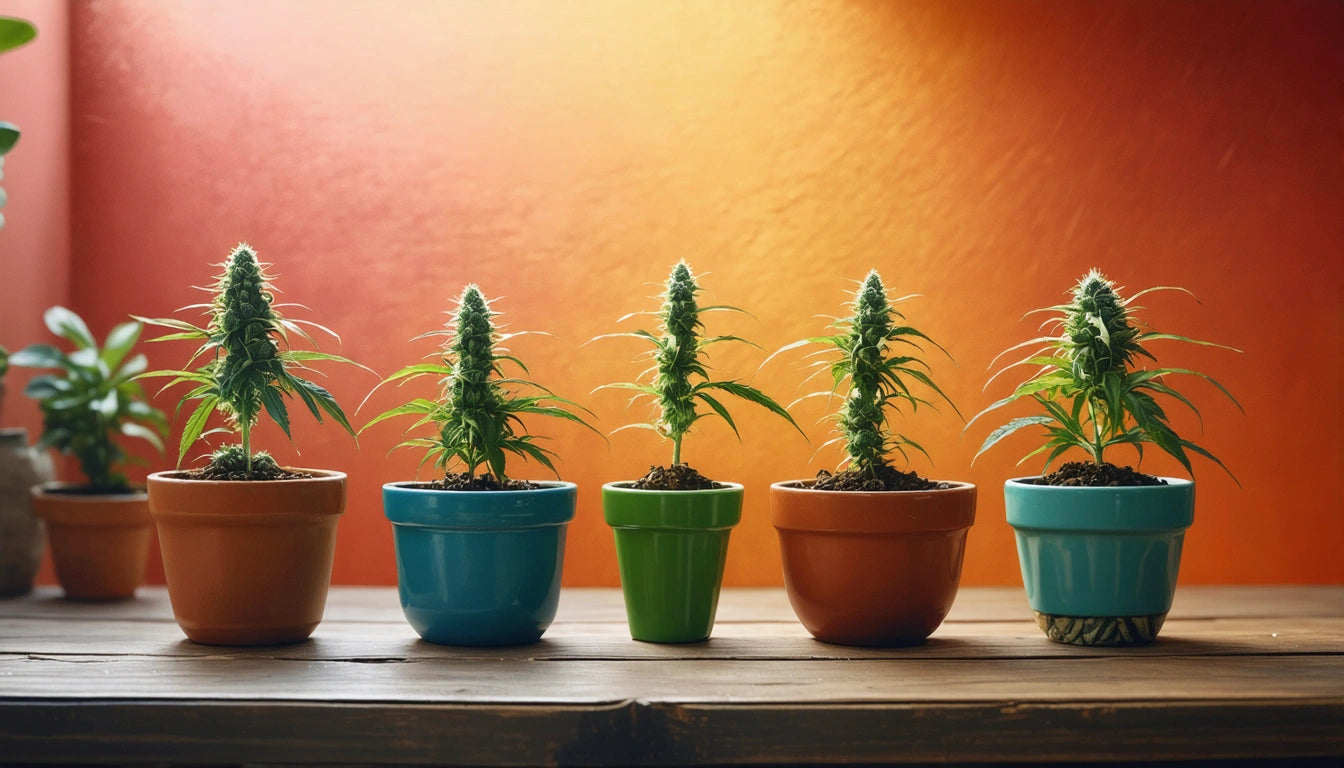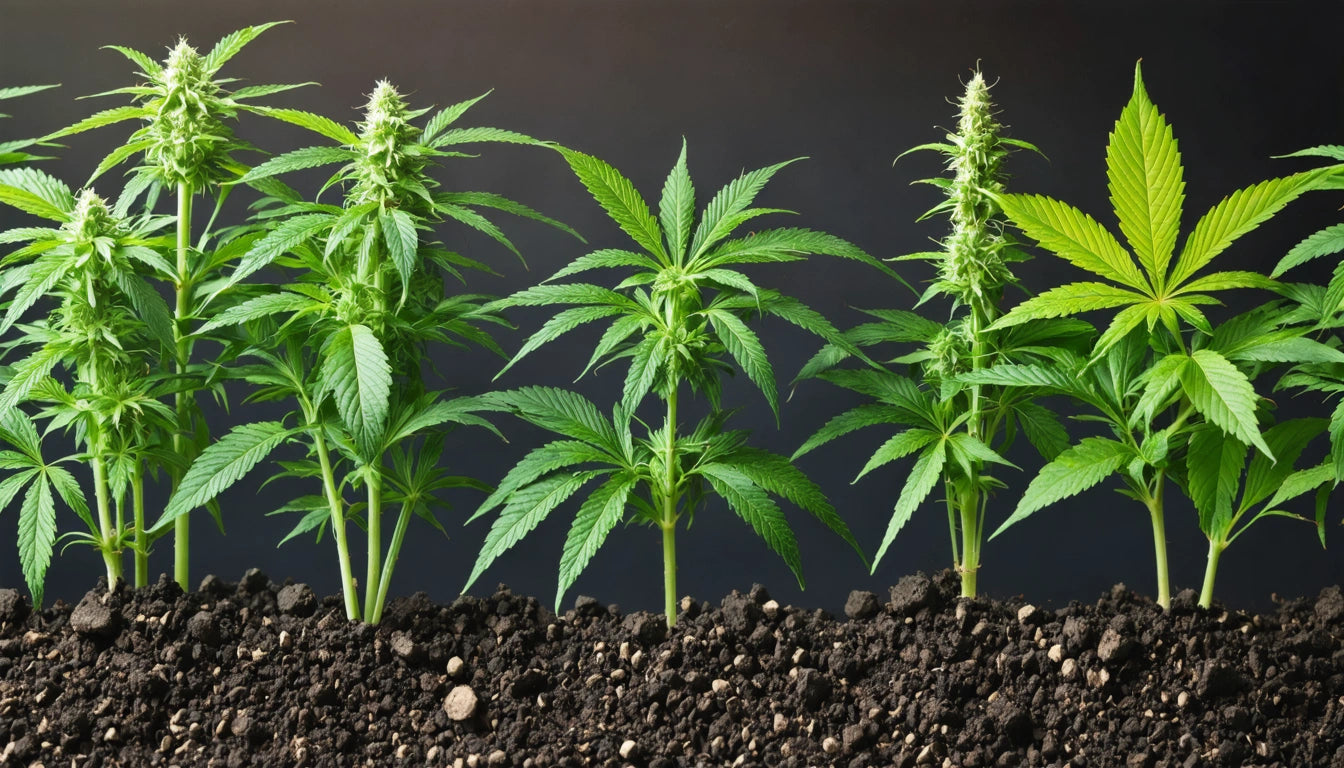Optimizing Autoflower Growth: Best Pot Sizes and Growing Mediums
Autoflowering cannabis varieties have revolutionized home cultivation with their compact size, rapid growth cycle, and beginner-friendly nature. Unlike photoperiod strains, autoflowers transition to flowering based on age rather than light schedule, making them uniquely suited for continuous harvests. However, this distinctive growth pattern means they require specific considerations for container sizing and growing medium selection to reach their full potential.
Understanding Autoflowers: Unique Growth Requirements
Autoflowering cannabis plants typically complete their entire lifecycle in 7-10 weeks from seed. This accelerated timeline means they develop a different root structure than photoperiod plants. According to this comprehensive timeline guide, autoflowers establish their root system primarily during the first 2-3 weeks, making initial container selection crucial.
Their ruderalis genetics contribute to their compact size and resilience, but also mean they have less time to recover from transplant shock or nutrient issues. This genetic heritage explains why cultivation techniques differ significantly from traditional cannabis growing methods.
Optimal Pot Sizes for Autoflowering Cannabis
Small to Medium Autoflower Varieties
For compact autoflower strains that typically reach heights of 50-70cm:
- 2-3 gallon (7.5-11L) containers provide sufficient space
- Fabric pots in this size range promote healthy root development
- Square containers maximize space efficiency in grow tents
Larger Autoflower Varieties
For high-yielding autoflower strains that can reach 100cm or more:
- 3-5 gallon (11-19L) containers allow for optimal root expansion
- Air pots or smart pots enhance oxygenation for larger root masses
- Wider containers (rather than deeper) accommodate lateral root development
The best size pot for autoflowers strikes a balance between providing adequate room for root development while avoiding excess soil that can retain too much moisture. Research on maximizing autoflower yields confirms that oversized containers can actually reduce productivity by creating waterlogged conditions.
Best Growing Mediums for Autoflowers
The best growing medium for autoflowers combines excellent drainage, nutrient availability, and oxygenation properties. Several options have proven effective:
Soil-Based Mediums
Quality potting soil amended with perlite and compost creates an ideal environment for autoflowers. This guide on selecting soil for autoflowers recommends a mix containing:
- 70% high-quality potting soil (light and airy)
- 20% perlite for drainage and aeration
- 10% compost or worm castings for organic nutrients
Soilless Mediums
Coco coir and peat-based mixes offer excellent control for more experienced growers:
- Coco coir with 30% perlite provides superior drainage
- Pro-mix or similar peat-based mediums offer balanced water retention
- Rockwool cubes work well for hydroponic autoflower setups
Many growers find that nutrient solutions designed specifically for autoflowers perform best in these soilless mediums, allowing precise feeding schedules.
Container Considerations Beyond Size
When selecting containers for autoflowers, material and design significantly impact root health. Many commercial growers who package their harvested product in specialized mylar storage bags start by optimizing their growing containers:
Container Materials
- Fabric pots allow air pruning of roots and prevent circling
- Air pots with side perforations maximize oxygen to the root zone
- Traditional plastic pots work well with proper drainage holes
Drainage Considerations
Regardless of the best pot size for autoflowers you select, proper drainage is essential:
- Elevate containers slightly to ensure complete drainage
- Add a layer of clay pebbles at the bottom of pots
- Consider saucer designs that prevent roots sitting in runoff
Potency Factors: Are Autoflowers Less Potent?
A common misconception is that autoflowers are inherently less potent than photoperiod strains. Modern breeding has largely eliminated this gap. High-yielding autoflower strains now regularly test above 20% THC when grown in optimal conditions.
Key factors affecting autoflower potency include:
- Genetics (seed quality from reputable autoflower seed banks)
- Container size relative to plant genetics
- Growing medium quality and nutrient availability
- Light intensity and spectrum
- Proper drying and curing techniques
When provided with the best growing medium for autoflowers and appropriate pot sizing, modern autoflowering strains can match their photoperiod counterparts in both cannabinoid and terpene profiles.
Maximizing Yields Through Container and Medium Optimization
The synergy between pot size and growing medium creates the foundation for successful autoflower cultivation. Growers can optimize this relationship by:
- Matching container size to specific strain characteristics
- Adjusting medium composition based on local climate conditions
- Implementing appropriate watering schedules for the chosen container/medium combination
- Using fabric pots with quality soil for beginners
- Experimenting with coco and nutrients for advanced control
By understanding the unique requirements of autoflowering cannabis and providing the optimal growing environment through proper container selection and medium composition, cultivators can achieve impressive results from these compact, efficient plants.











Leave a comment
All comments are moderated before being published.
This site is protected by hCaptcha and the hCaptcha Privacy Policy and Terms of Service apply.